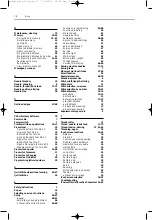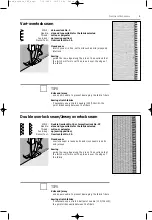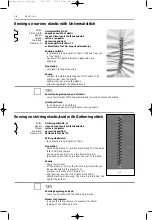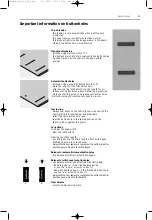
12
Start with a new needle
· blunt needles can damage knits
Use a stretch needle (130/705 H-S) if necessary
· the needle point slides easily between the fibers
Use a fine sewing thread
· coarse threads can damage knits and cause holes when
the garment is washed
When basting, use a darning thread
· very lightweight (80 weight) darning thread is easier to
remove once the seam is complete
Sew a test, when necessary
· the elasticity of knit fabrics varies greatly
· adjust basic settings to suit the fabric, the seam
should be as stretchy as the fabric
· for greater elasticity:
· use a shorter stitch length
· use a wider stitch width
(only one of these adjustments may be necessary)
Presser foot pressure
· soft, loose knits can wave when sewn:
reduce the pressure until the seam lies flat the machine
must still feed the fabric properly
Sewing knits
TIPS
Needle stop down
· needle stays in fabric when pivoting around curves (neck edges and
armholes)
Presser foot pressure
· reduce pressure if hem stretches
Honeycomb stitch No. 8
universal, ballpoint, or stretch as needed
cotton or polyester
up (sewing position)
Reverse pattern foot No. 1C
Honeycomb stitch edges
· for all cotton, wool, synthetic and mixed fiber knits
Preparation
· turn the raw edge under by 1 cm (
3
/
8
”); press and
baste if desired
Sewing
· sew from the right side
· trim excess fabric from the wrong side
Balance/corrections
· Stitch is too open – make the stitch shorter by touching the
“up” (
↑)
balance arrow several times
· Stitch is overlapping – make the stitch longer by touching
the “down” (
↓)
balance arrow several times
Honeycomb stitch edges
Stitch:
Needle:
Thread:
Feed-dog:
Presser foot:
Important tips for sewing knit fabrics
☞
Sewing knits
naeh_artista_180_engl. 7.10.2002 16:31 Uhr Seite 14






























